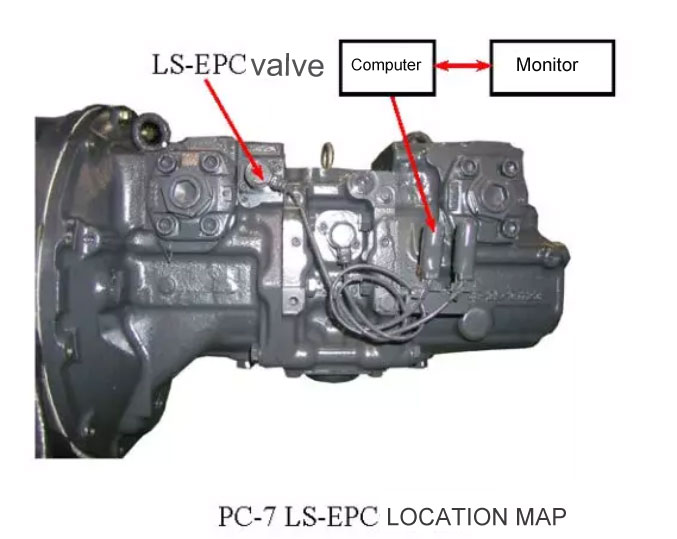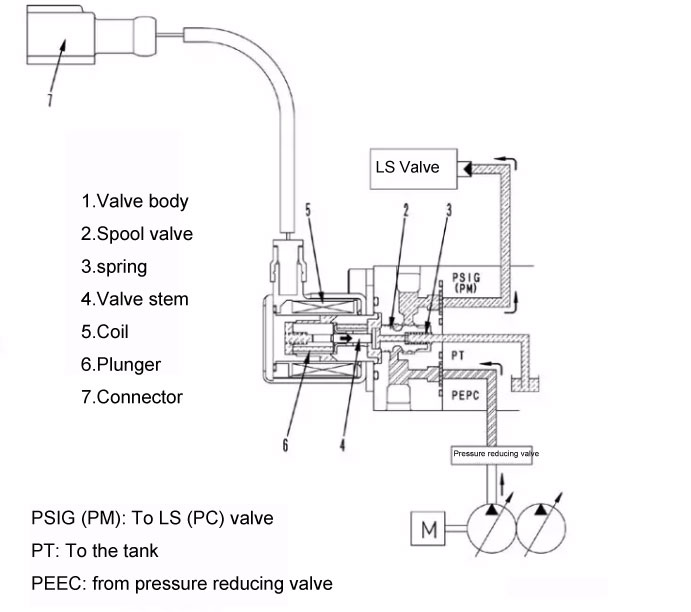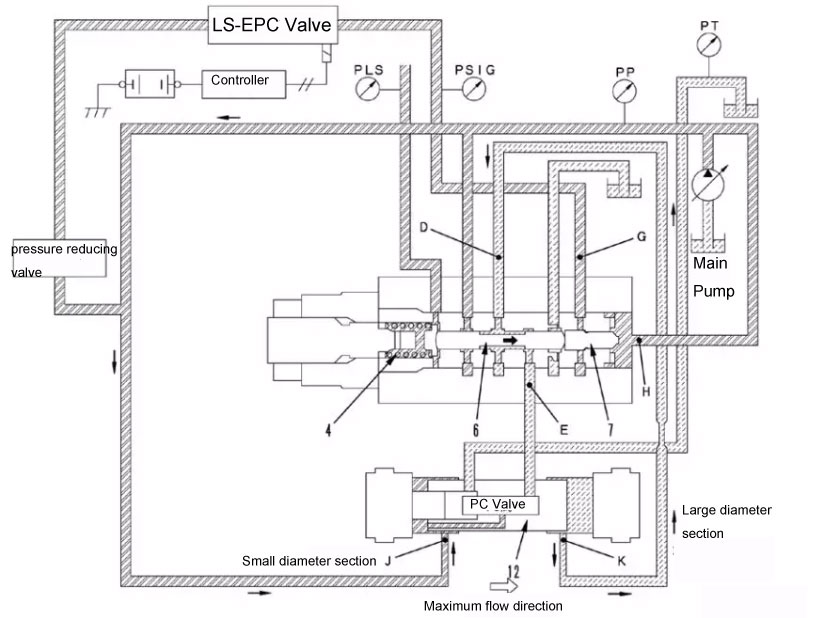

I. Overview
LS-EPC solenoid valve (as shown below), according to the operation command issued by the driver on the monitor, this command is transmitted to the computer, and the command issued by the machine computer generates a signal pressure oil, participating in the work of the LS valve makes it more Precise control of main pump flow.
II. Location
Open the pump outer cover, you can see the LS-EPC solenoid valve, its input oil pressure comes from the self-pressure reducing valve, the voltage signal comes from the computer board: the voltage signal from the computer is different, the position of the internal spool is different, and The output oil pressure is also different. This output oil pressure enters the LS valve. For the position diagram of PC-8, please refer to the main pump structure diagram.

III. Structure
It can be pointed out from the right figure that the LS-EPC solenoid valve is mainly composed of an electromagnetic coil (5), a spool valve (2) and an inlet and outlet oil passage. The opening and closing between the oil port of the self-pressure reducing valve and the oil outlet of the LS valve, and the size of the opening depends on the amount of current entering the solenoid (5), and the amount of current is automatically based on different working conditions Given by computer.
The spool valve (2) is propelled by the electromagnetic force. If the spool valve (2) is stuck due to dirt, the spool cannot move; therefore, although the circuit is no problem, the pressure entering the LS valve cannot be changed with different working conditions. Change, this will affect the action of the LS valve, and then affect the action of the whole machine.

IV. Working principle
When the driver presses the work mode selection switch A, E, L, B or the walking speed switch (Hi, Mi, Lo), this information is transmitted to the computer through the monitor, and the computer according to the mode selected by the driver and made The corresponding control electric signal is sent to the LS-EPC electric contact valve by the operation of the joystick. According to the change of the electric signal, the solenoid of the solenoid valve generates a corresponding thrust to push the solenoid valve core to move accordingly. The incoming pressure oil enters the LS valve through the solenoid valve spool so that the pump flow can be accurately controlled.

V. Fault diagnosis
Symptom: In L mode, the driver reports that the micro-operation performance is not good.
Inspection result: The solenoid coil of the LS-EPC solenoid valve is hot.
Failure analysis: Because the coil is burned out, no electromagnetic force can be generated to promote the movement of the valve core, so the pilot pressure oil from the self-pressure reducing valve cannot enter the LS valve through the solenoid valve. As a result, the precise flow control of the pump is lost.
Troubleshooting: Micro operation performance becomes better after replacing LS-EPC solenoid valve

VI. Test
1. Remove the oil pressure measuring plug (5) and install the H10 quick-change connector and a 5.9 MPa [60 kg/cm] oil pressure gauge.
2.Test conditions:
1) Hydraulic oil temperature: 45 ~ 55
2) Working mode: A mode (PC-8 P mode)
3) Engine speed: high speed
3.Measurement of LS EPC output pressure

| Travel speed switch | Walking joystick | LS-EPC valve output pressure |
| Low speed | Medium speed | about 2.9Mpa |
| High speed | Micromanipulation | 0 |